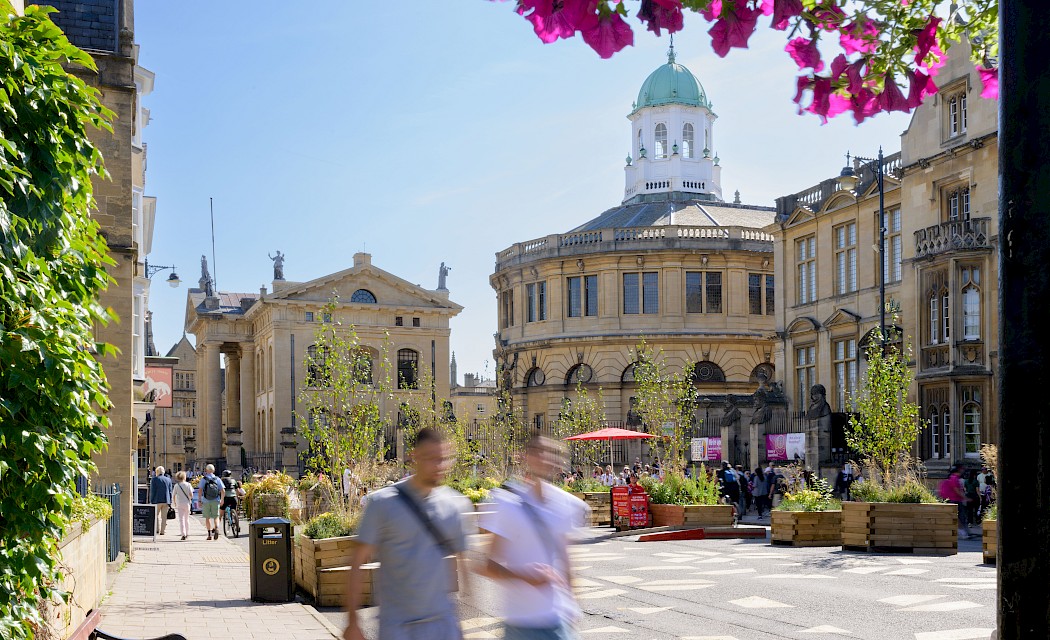Access to open space, modern living, and genuine history. Is Oxfordshire’s unique offer the secret to attracting the world’s best companies?
Although Oxfordshire’s position as a world-leading innovation ecosystem is undeniable, its attractiveness as a place to live as well as to work is an important ingredient in bringing globally significant organisations to the area.
Oxford Calling uncovers what is so special about Oxfordshire's culture, history and natural environment.
Room to grow
For an area with a world-renowned city at its heart and thriving high-tech centres of expertise in mobility, energy and life sciences, it may surprise you to know that Oxfordshire is the most rural county in the southeast of England.
In the western part of the county, which sits within the Cotswolds, the low population density means that every person has nearly a football-pitch-sized space to themselves.
All around the county, there is room to grow and develop personally, and to enjoy the freedom of space. From the Chiltern hills in the south to the Cotswolds area of outstanding beauty, there is glorious rolling landscape and far-reaching views to be enjoyed. The River Thames and its tributaries flows through the heart of the county, offering riverside walking and leisure activities, from boating and rowing to cosy meals in waterside pubs.
Numerous villages, many with an ancient church or village green at their heart, offer a traditionally English way of living among thatched cottages and gently-glowing limestone houses. And they come with modern facilities such as high-speed broadband, good roads and a railway network that connects easily with all directions including London, around an hour away from most parts of the county. For those who like to go by two wheels, there is a network of cycle pathways linking towns and villages.
Cultural
There’s a lively cultural scene wherever you choose to live, with many activities in the smaller settlements. But you are never far from the attractions of Oxford, with its theatres, concerts, music venues, annual literature festival and Christmas market. Shakespeare’s home of Stratford-on-Avon is an easy journey.
Oxford’s museums are truly historic and the collections within the Ashmolean and the Natural History Museum are unique. Artistic communities have long chosen the area since early Victorian times. Nowadays these may include writers, filmmakers and multi-media artists.
History
Whether you choose to live in the country, the city or in one of the many modern eco-homes around Bicester, you will never be far from the opportunity to look up and admire an ancient church, a country home, or an imposing college gateway, most of them built in traditional stone or brick. Oxfordshire’s most well-known stately home is eighteenth-century Blenheim Palace, a UNESCO world heritage site building set in a romantic parkland that has attracted visitors from around the world for centuries. It holds a series of attractions throughout the year, from summer concerts to Christmas illuminations.
We asked a couple of recent arrivals what they enjoyed about living in Oxfordshire.
Emre Karaselvi a senior performance engineer at Reaction Engines in Culham, moved to Oxfordshire from Turkey: “There is lots of green space and plenty of history too. People are friendly, especially when you have a dog.”
Lucy Norman, a design engineer, lives and works for Siemens Healthineers Magnet Technology in Witney, a market town around 12 miles from Oxford: “It has everything I want in terms of shops and amenities, along with access to lovely countryside for running and cycling. It’s also easy to cycle into work.”
You can find out more on Oxfordshire's cultural, leisure and tourism offering via Experience Oxfordshire.
